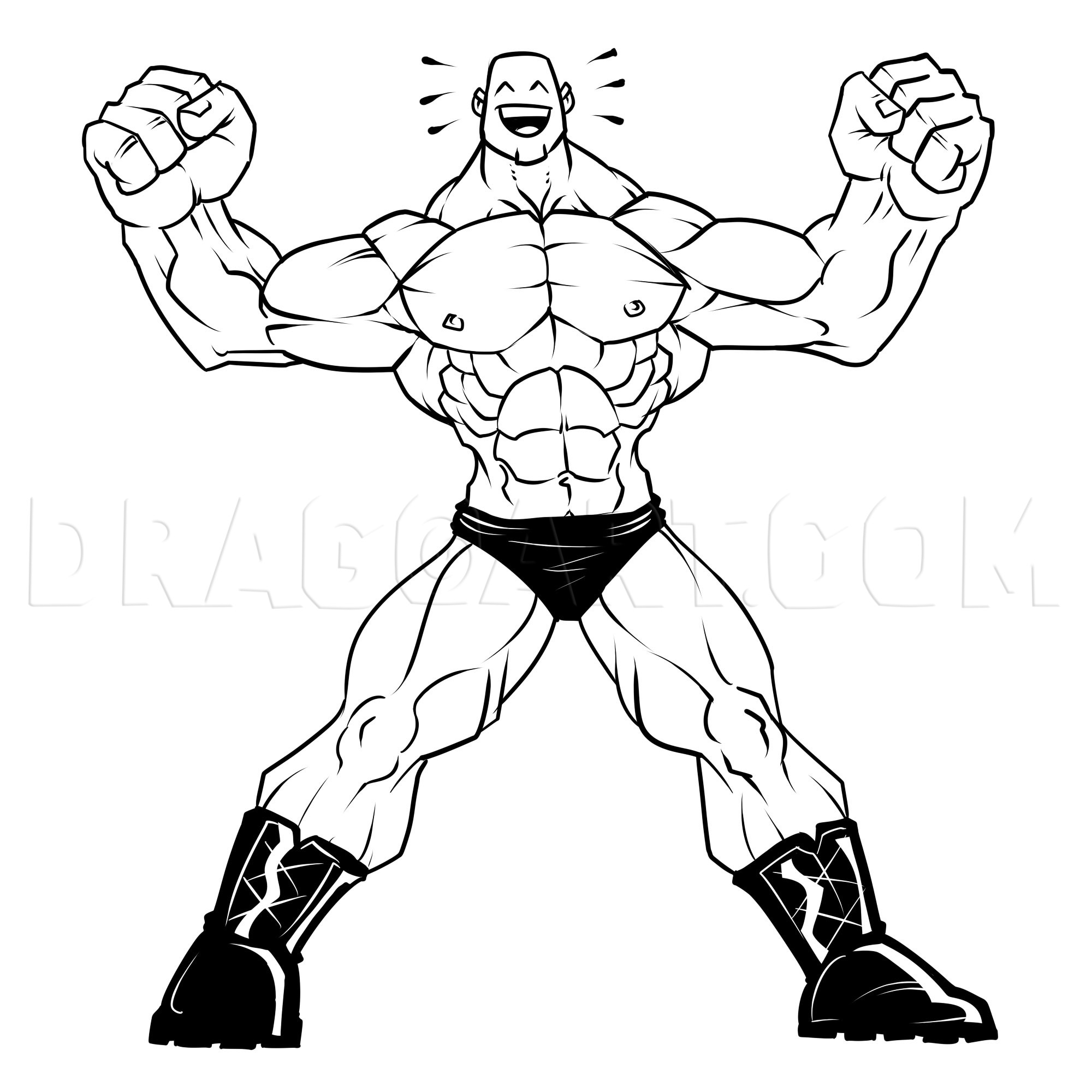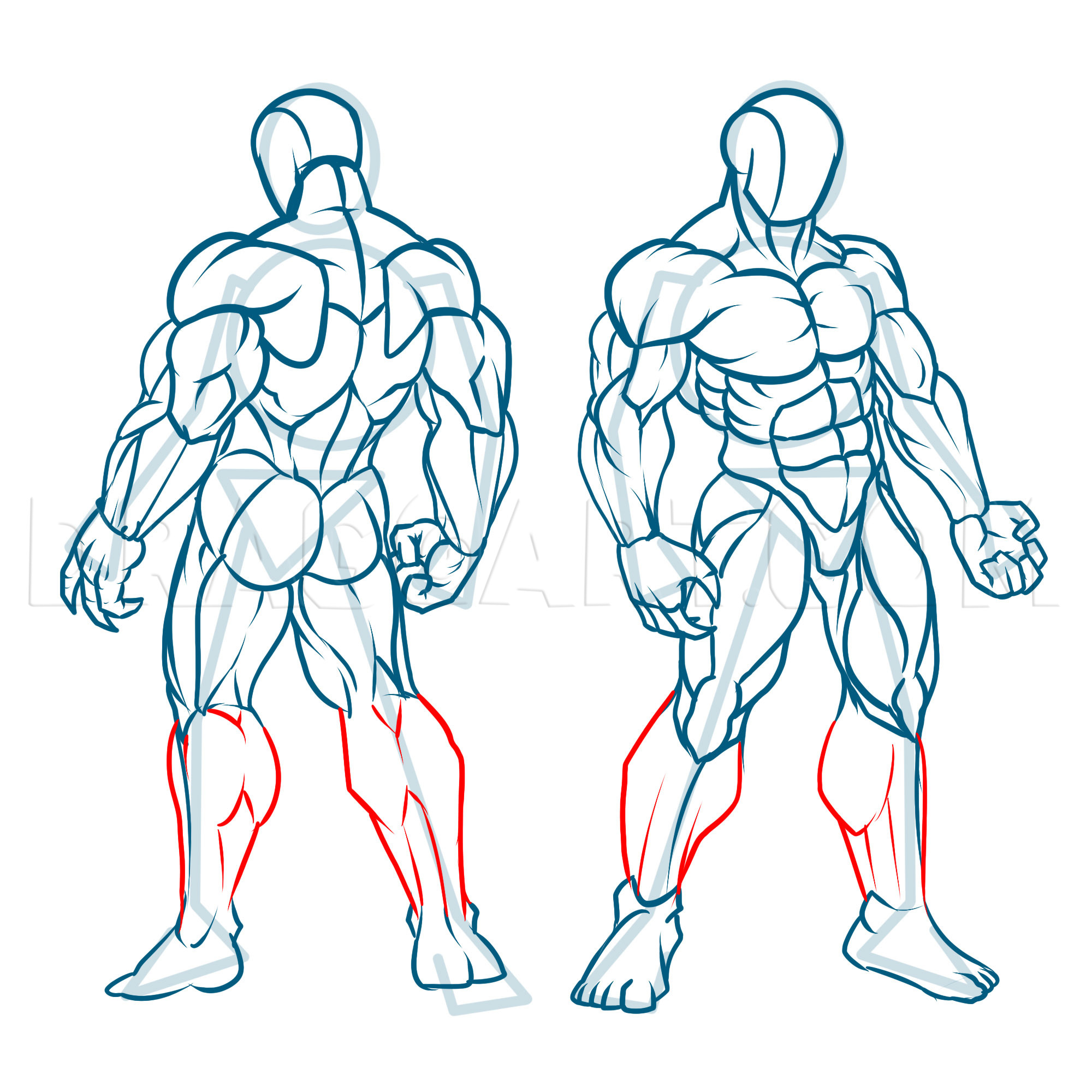1
Drawing muscles is actually pretty complicated. When I first started drawing muscles as a kid, I would give my characters 16 rows of ab muscles (more abs = stronger, right??), and squeeze a lot of "( )" lines into each arm or leg section. I had no id
2
The first step to drawing muscles is understanding what a muscle is. Muscles are made of strands of "fibers." If you've ever had whole roast or corned beef, you can see the individual muscle strands in the meat. So while the different muscles in the
3
While it's impossible for me to give detailed instruction on drawing every muscle in the body, it's supremely important to note that muscles and body parts look different from different angles, and in different positions. Here I drew a front, side an
4
I wanted to touch on the basic functions of most muscles that are drawn on the human figure in action. When it comes to the arms and legs, and even the major torso movements, we're talking about Flexion and Extension. The biceps and hamstrings (and I
5
Ok, enough lecture. Now let's draw. Begin by drawing a large circle for the chest. Draw a small oval above the chest and a small triangle below it and connect them to the chest with short lines. These are the head and pelvis. Draw two long lines down
6
Lighten your base drawing and begin the line drawing. I've drawn a 5-sided shape for the outline of the head. Square on top, with a pointy chin. The torso is basically two shapes smacked together. I should have draw a separation line, but I want the
7
Keeping things simple, let's draw a jellybean for each upper arm. Be sure to have two curve on top -- one for the biceps and one for the shoulder. Then move down and draw a house-shape or pentagon for each of the upper legs. The lower point of these
8
I'm combining two steps here because the shapes are so simple overall. Draw two angles to outline each lower leg. The angle on the inner calves is more dynamic than the outer side of the leg. Draw in some simple feet, then move up to the arms. I reco
9
With the main body parts outlined, now we can start drawing in the main muscles groups. I would begin with the line that runs below the pectoral/chest muscles. It's a wide W-shape. Then split the chest in half with a center line that runs down the en
10
Now for the arms and legs... Begin with a small curve to underline each shoulder muscle. Then draw a curve for each bicep. Follow that with a smaller curve for each ultra-muscular armpit. I noticed I needed some lat muscles (latissumus dorsi), so let
11
Ok, don't get distracted by all the extras on this step. Start at the neck and draw a small V from the chin to the chest. Draw a curve on each side of the V, running from the jaw to the chest. These are the sterno-mastoids. I think there's a "cleido"
12
I decided to use the current artwork as a base for a more detailed drawing with thinner lines. I made a couple of adjustments to the pectoral placement. Other than that, everything matches up closely to the simpler drawing. Getting the basic muscle p
13
Now we're going to tackle something a bit more complex. I'll try to space the steps out as much as possible, but we're going to be drawing a figure from both the front 3/4 angle and a back 3/4 angle. Draw a circle for the chest and a smaller one for
14
I don't always draw muscles the same way on every character. I like to mix up the techniques. One fun way of starting off is to picture the chest and shoulders as a harness that wraps around the ribcage in one piece. The front should look familiar, b
15
In the front view we'll draw in the sterno-cleido-mastoids that run from behind the ear to the center of the collar bones, right between the top of the pectorals. Then we'll draw the trapezius muscles from both the front and back view. These muscles
16
Here I want to draw the primary muscles seen from each angle. On the upper arm, we see the biceps on the front angle and the triceps on the rear angle. The biceps can be drawn as a rounded rectangle running vertically, down from the shoulder to the e
17
Now it's time for the forearms muscles. These are some of the most complicated muscles on the body, so I recommend looking at a mirror and using an anatomy book, action figure or photo reference to help you place these muscles. The larger forearms mu
18
Using each opposite image as reference, we can finish up the arms by adding the remaining muscles that are mostly obscured in each view. Knowing what the triceps look like from the rear view should make them easily recognizable in the front view. The
19
On the front, let's outline the bottom of the ribcage and start adding the interlocking muscles below the pectorals. These are the serratus anterior. On the back view, we can draw the lats I mentioned in the previous drawing. They're only partially v
20
This step is pretty each. First we'll outline the top ridge of the pelvis. On the rear view, it runs along the top of the gluteus muscles. On the front view, the line continues down to the crotch. From there, we can add the six pack of ab muscles. Th
21
Now we'll draw the major muscles seen on the front and back of the legs. On the front, start by drawing each kneecap. The center quad muscles runs from the kneecap up to the pelvis ridge. The tendons that attach to the bone are skinny, but the muscle
22
Now we can add the main muscle heads that rest of either side of the center quad muscle. The bulk of these muscles rests just above the kneecap, but they actually attach to the lower leg bone as well as the upper leg bone. You may notice a tube-like
23
The calf muscles mirror the forearm muscles in an interesting sort of reverse-symmetry... if that makes any sense. The bulky muscles sit high on the back of the leg and tendons run down toward the ankle, all the way to the toes. The shin itself is mo
24
With all the muscles in place, we can go in and detail this sucker in any way we please. I decided to go with my thin line-drawing style. I kept the upper body very defined, but blurred out the lower body muscles a bit so that not every muscle looks
Comments 0
Details
March 30, 2012
Description: I'm back, and this time I'll be showing you how to draw muscles. I'll touch on some basics and then we'll draw a simple muscular figure and a complex front and back shot. Let's get drawing!

















































































